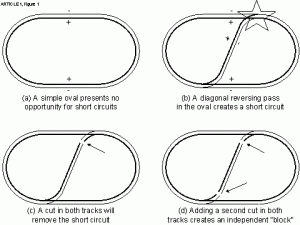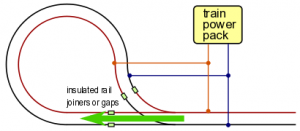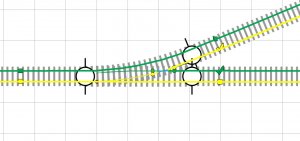Power routing usually indicates a live frog or frog rails that need to be isolated due to the polarity change that occurs when points are switched from one rail to the other. The frog is live and attached to both diverging rails and thus power routing changes as the turnout is thrown from one rail to the other.
I think power-routing doesn't mean to some folks what it means to you.
Power-routing to me means that power is "removed" in one way or another from the frog-rails of the un-selected route.
If the power is "removed" by making both rails the same polarity then you have the potential for a short.
If the power is "removed" by disconnecting one/both rails then you don't have the potential for a short.
Using this "definition" of power-routing both Electrofrog and Insulfrog ARE power-routing. In Electrofrog turnouts both rails become the same polarity. In Insulfrog turnouts one rail is disconnected.
While the Electrofrog frog is powered (by default) and the Insulfrog frog is un-powered, frog power is a separate issue from frog-rail power.
Last edited by a moderator:




